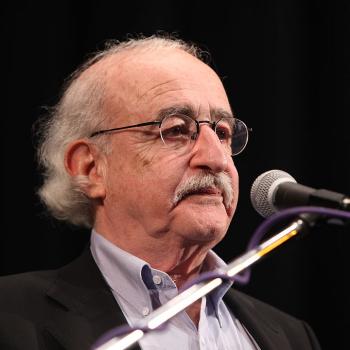Editors' Note: This article is part of the Patheos Public Square on the Future of Faith in America: New Religions. Read other perspectives here.
What's the foreseeable future of the Baha'i Faith in America over the next five years?
Future projections are best based on present trends. So let's take a look at what the American Baha'i community is doing now in order to forecast future growth and development. Let's also focus on the three "protagonists" who are the principal actors in these emerging trends: Baha'i communities, Baha'i individuals, and Baha'i institutions. Based on key sources (especially on a close read of the 2015 Annual Report of the National Spiritual Assembly of the Baha'is of the United States), here are my "Top Seven" emerging trends for Baha'i Faith for the next five years.
Baha'i Community Initiatives
1) Model Baha'i "clusters" will attract attention. The watchword is "community building." Currently, the "hotspots" of Baha'i community development include:
- East Valley (southeast suburban Phoenix) in Arizona.
- Metro Atlanta, Georgia.
- San Diego, California.
- The Triangle (Raleigh-Durham-Chapel Hill area) in North Carolina.
These are places where "a level of growth in which at least one hundred people are facilitating the involvement of nearly a thousand in the work of community building," and where "about half of the participants are not enrolled members of the Faith." These "clusters" (local Baha'i communities whose community building activities are coordinated with one another) serve as models for other Baha'i nationwide. (Report, 2)
2) "Junior Youth Spiritual Empowerment Programs" will accelerate. Nowhere is Baha'i concern for the future better demonstrated than in the Baha'i work that is currently being done at the grassroots level. Throughout the world, Baha'is reach out — in their own neighborhoods, to children, junior youth, and youth — by organizing children's classes and "Junior Youth Spiritual Empowerment Programs" for the moral and spiritual character-building of young people, and to instill in them a strong sense of purpose that is service-oriented. "The greatest advances at the present time are in the clusters most closely associated with the junior youth spiritual empowerment program." (Report, 2) Expect to see significant growth in the Baha'i-sponsored Junior Youth Spiritual Empowerment Programs.
3) Baha'i "Devotional Meetings" will be systematically developed. The Universal House of Justice (the international Baha'i council, elected every five years) writes: "Devotional gatherings, the embryo of the local Mashriqu'l-Adhkár [Baha'i House of Worship], kindle the stirrings of the spirit and ignite the flame of service." (Qtd. in Report, 5) Over time, a groundswell of neighborhood Baha'i prayer and worship gatherings will eventually lead to the establishment of local Baha'i Houses of Worship.
4) Initiatives for "social action" will multiply and magnify. "Social action" (community service) initiatives will arise where the inspiration and human resources match with local needs. Such "endeavors of social action will strengthen the fabric of community life." (Qtd. in Report, 87)
Baha'i Institutional Initiatives
5) The Wilmette Institute will play a greater role in applying Baha'i principles to contemporary social issues. An agency of the National Spiritual Assembly of the Baha'is of the United States, the Wilmette Institute offers distance-learning courses that serve the deepening and enrichment function that is complementary to Baha'i community building efforts at the local level. "In future years, the Wilmette Institute will continue to explore ways to create a dynamic coherence of learning, teaching, and dialogue about pressing social problems to enhance the Faith's standing in the world." (Report, 107) Offered in 2015 are courses on such topics as "Climate Change," "Economics and the Baha'i Faith," "Sustainable Development and the Prosperity of Humankind," "Advancement of Women," and even a Native American topic, "Two Peacemakers: Baha'u'llah and Deganawida."
Individual Baha'i Initiatives
6) The Baha'i internet presence will greatly expand. If BahaiTeachings.org is any indication, then public awareness of the Baha'i Faith on the internet will expand exponentially. A feature story in the magazine, The American Baha'i, for March/April 2015 (p. 38), recognized BahaiTeachings.org as "perhaps the best known" of "blog sites operated by individual Baha'is" that have "initiated countless conversations the general public and have spurred many people to investigate the Faith's teachings and engage in the Baha'i-sponsored community-building activities where they live." (38) As of July 2015, BahaiTeachings.org is followed by 189,989 Facebook users. This is the Baha'i site to watch!




